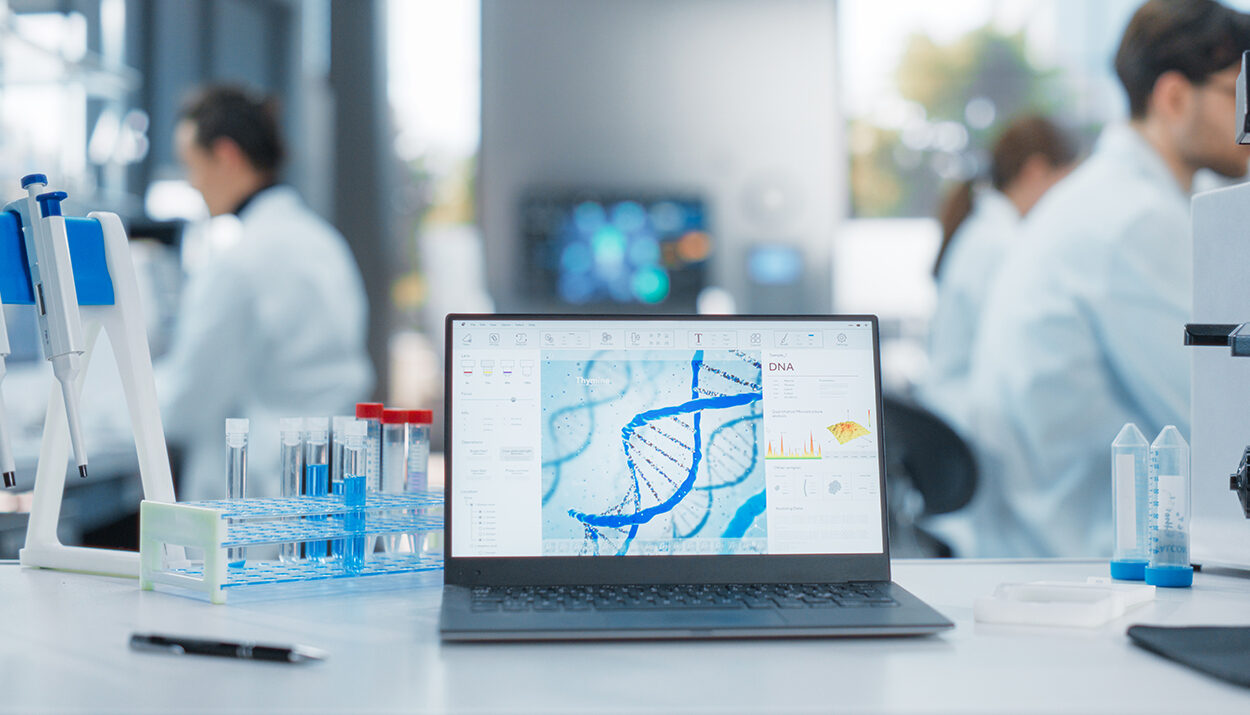The global molecular diagnostics market is expected to surpass $30 billion by 2029, growing at a CAGR of over 11% – a clear sign of its growing impact in infectious disease management, oncology, and pharmacogenomics.
But what exactly is molecular pathology or diagnostics? In simple terms, it’s the detection of specific DNA or RNA sequences that are tied to a disease – essentially uncovering the molecular fingerprints of an illness with pinpoint accuracy.
The real question is: with such a massive leap in potential, are most labs truly prepared to make the shift from conventional diagnostics to this cutting-edge approach? Or will some get left behind as precision medicine becomes the new standard?
Let’s explore what this means for labs today, and how they can stay ahead of the curve.
What’s Fueling the “Molecular Surge”?
The growing demand for molecular pathology isn’t accidental. A combination of scientific advances, pandemic-era acceleration, and the push for personalized care have converged to make molecular testing indispensable!
Here are some of the key forces driving this surge:
1. ‘Precision medicine’ is Reality, Not a Buzzword!
Healthcare has evolved past the ‘one-size-fits-all’ approach. Thanks to advances in genomics and molecular pathology, personalized medicine is now transforming how we detect, prevent, and treat diseases – tailoring care to each individual’s genetic profile.
2. Chronic Diseases and Infections Are Increasing
We are recording an increase in the number of people with chronic diseases and drug-resistant infections, with cancer and tuberculosis being among them. Conventional diagnostics often miss early-stage or drug-resistant cases.
In contrast, advanced molecular diagnostics provides timely, accurate detection, which is vital for managing cancer, tuberculosis, and other chronic illnesses.
3. COVID-19: A Turning Point in Global Diagnostic Awareness
The pandemic brought molecular diagnostics into the spotlight, with RT-PCR becoming the trusted standard for quick and accurate detection.
4. Early Detection Is the New Gold Standard
Whether it’s detecting malignancies early or preventing disease progression, timely insights from molecular pathology make it an invaluable ally to clinicians in saving lives.
How is Molecular Diagnostics Transforming Labs and Patient Care

Molecular pathology or diagnostics isn’t just reshaping testing protocols – it is reshaping lab workflows and clinical decision-making. Its impact is felt across patient care, from diagnosis to treatment personalization.
Here’s how it transforms outcomes:
1. Beyond Precision, It’s About Clarity.
Traditional diagnostic methods often struggle to detect subtle changes in the body. Molecular diagnostics, however, offers enhanced sensitivity and specificity – allowing for earlier, more accurate detection.
This means fewer false positives and negatives, bringing peace of mind to both physicians and patients.
2. Early Detection, Greater Advantage.
In diagnostics, being early can make all the difference.
Molecular testing can identify abnormalities long before symptoms appear. The result? Less invasive treatments, better prognoses, and more time to take proactive steps. In healthcare, early detection, truly is everything!
3. Personalized Treatments with Molecular Precision.
In oncology and beyond, advanced molecular diagnostics helps match patients to targeted therapies based on their unique genetic mutations. This helps improve their outcomes, while minimizing unnecessary toxicity.
Technologies like real-time PCR and Next-Generation Sequencing (NGS) speed up processing times, which is crucial for emergencies, and fuels growth in the molecular diagnostics point of care market.
The Challenges of Implementing Molecular Testing in Labs
While molecular diagnostics offer groundbreaking potential, implementing them in routine lab settings comes with a unique set of challenges:
- High Setup Costs: Investing in thermal cyclers, cleanrooms, biosafety cabinets, and other specialized equipment demands a substantial financial outlay – especially challenging for small to mid-sized labs.
- Shortage of Trained Professionals: A global talent gap persists, as training for advanced molecular diagnostics is intensive and time-consuming, limiting the availability of skilled professionals.
- Data Overload and Bioinformatics Gaps: Molecular tests generate large datasets that require specialized bioinformatics expertise. Many labs struggle with LIS (Laboratory Information System) integration and accurate data interpretation.
- Regulatory and Certification Burdens: Molecular diagnostic centers must adhere to stringent quality assurance standards and obtain proper certifications, adding another layer of complexity and cost.
- Cost vs. Coverage Challenges: Even with everything in place, reimbursement for advanced molecular testing remains a hurdle. Insurance coverage often lags, directly impacting lab profitability.
Are You Truly Ready? A Quick Checklist for Molecular Labs
Laboratory professionals should regularly evaluate readiness across core areas:
- Equipment for PCR, NGS, and real-time diagnostics
- Staff training in molecular protocols
- Data management via LIS
- Regulatory compliance and reporting
- Strategic partnerships or outsourcing plans
If gaps exist in more than two areas, it may be time to reassess and plan a phased approach toward molecular adoption.
So, What’s The Smoothest Way for Labs to Go Molecular?
Transitioning to molecular diagnostics doesn’t have to mean complete overhaul. Labs can adopt a phased and strategic approach to scale capabilities without overwhelming operations.
Here are a few practical steps to consider:
1. Invest in Scalable Technology: Start with what is immediately doable. Go for modular-type platforms that grow along with the needs of your tests, particularly in the molecular diagnostics POC arena.
2. Collaborate for Success: Partnering with diagnostic companies or research institutions can provide shared infrastructure and experience.
3. Upskill Your Personnel: Frequent training and certification initiatives help build a skilled team, boosting the lab’s confidence in delivering accurate molecular diagnostics.
4. Justify the Expense: Labs must present a strong ROI case by highlighting the long-term revenue potential and improved patient outcomes of molecular diagnostics.
5. Stay Updated: Regulations and best practices are constantly evolving in the molecular diagnostics market. Lab professionals should stay engaged through professional societies, journals, and webinars to stay relevant.
What’s Next? Molecular Diagnostics in 2025 And Beyond
Testing That Travels with You
Molecular diagnostics are moving beyond traditional lab settings to be deployed in the field – whether in ambulances, rural clinics, or disaster zones. All thanks to ‘point-of-care innovations’!
AI: The Smartest Lab Partner Yet

Incorporating AI into labs has revolutionized the management of large datasets, reducing the need for manual interpretation and significantly improving turnaround times. By identifying subtle patterns more efficiently, AI streamlines genomic data analysis, minimizing errors in molecular testing.
From High-Tech to Scalable Public Health Solutions
Population-wide genomic testing will likely become a part of routine screening. Identifying risks earlier and enabling large-scale preventive care will be a key transformation in the evolving molecular diagnostics industry.
Bridging the Diagnostic Divide
The rapid growth of the molecular diagnostics market isn’t just about innovation; it’s about inclusion. Expanding access to advanced diagnostic methods in underserved regions is a crucial step in reducing global health disparities and ensuring all patients receive timely, accurate diagnoses.
Wrapping Up: Time to Gear Up, Not Give Up!
Molecular diagnostics are no longer a distant prospect; they are an essential reality of today’s healthcare.
With the continued convergence of precision, speed, and patient-focused care, laboratories must evolve. Though the transition may be complex, the benefits for patients, providers, and public health are substantial and undeniable.
Outdated laboratories must act now! Evaluating infrastructure, training gaps, and scalability are required to stay competitive in the molecular diagnostics industry.
As advanced molecular diagnostics become a routine part of care, allied healthcare professionals – especially lab professionals and diagnostic experts – play a central role. From test interpretation to workflow optimization, their contributions are critical to making these innovations scalable and clinically useful.
As innovation speeds up, labs adopting this modern diagnostic approach will gain a major advantage in patient outcomes and operational efficiency.
Looking to lead the change in laboratory practices? Join MDForLives to engage with a global community of allied healthcare professionals and contribute to research through paid medical surveys.
FAQs
-
What is molecular diagnostics?
Molecular diagnostics refers to techniques that assist in the diagnosis and monitoring of a disease, risk prediction, and treatment strategy decision-making by detecting specific sequences in DNA or RNA.
-
What are the most common applications of molecular diagnostics in clinical settings today?
Key applications include the detection of infectious diseases (for example, COVID-19 and HIV), cancer diagnosis, screening for genetic disorders, and pharmacogenomics.
-
Why has there been such a rapid increase in demand for molecular diagnostics recently?
The demand has soared due to genome research, the prevalence of chronic diseases, and acute public awareness after COVID-19. There is also a general trend toward precision medicine.
-
What training or skills do laboratory staff need to work with molecular diagnostics?
Lab staff should be trained in PCR, NGS, nucleic acid extraction, contamination control, and data interpretation. Familiarity with bioinformatics and LIMS will also help.
REFERENCES

MDForLives is a vibrant community of healthcare professionals and patients dedicated to shaping the future of healthcare. We provide valuable global insights to healthcare companies through online surveys, interviews, and discussion forums.






